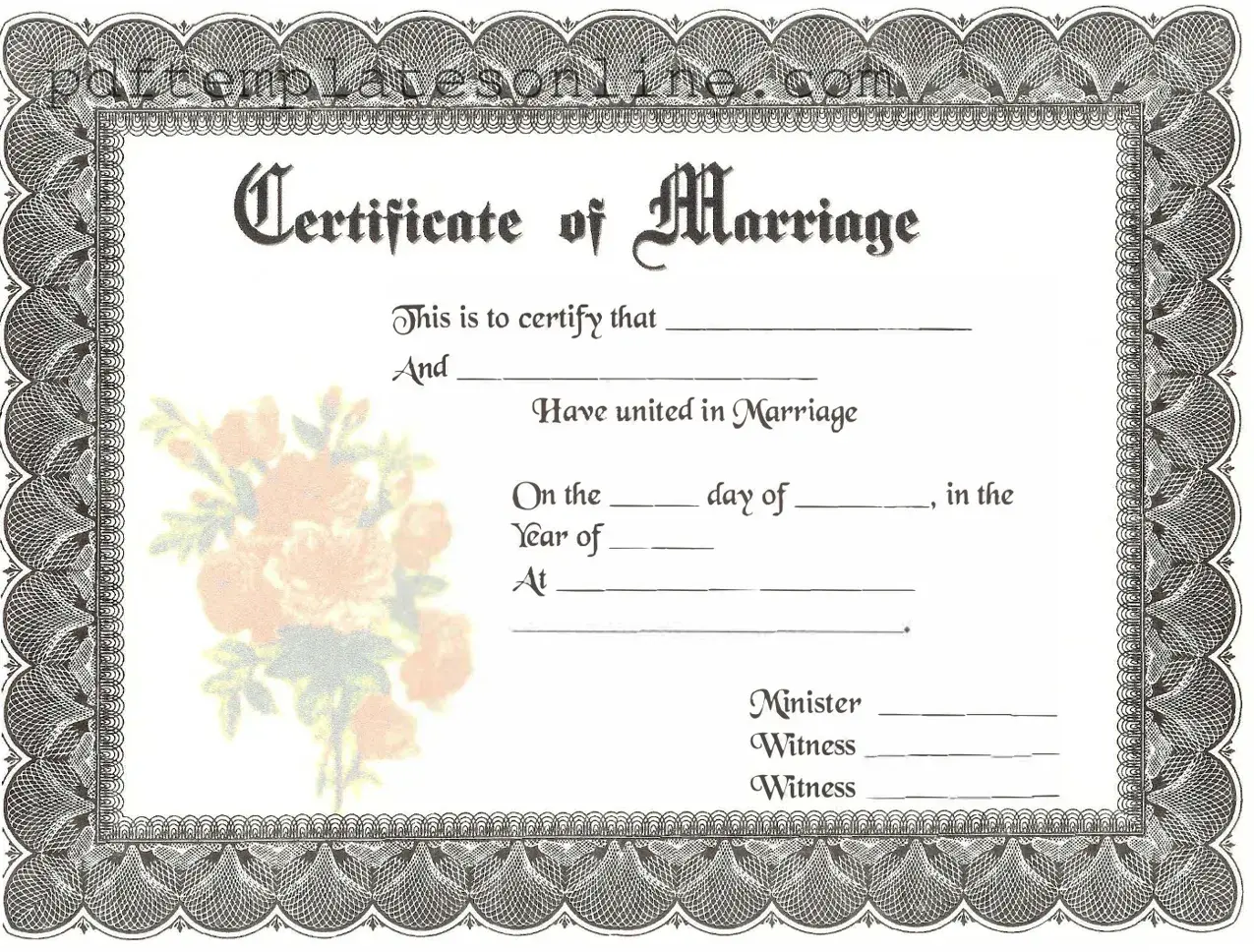Completing a Marriage Certificate form is a significant step in the journey of marriage. However, many individuals make common mistakes that can lead to delays or complications. One frequent error is providing incorrect personal information. This includes misspellings of names, incorrect dates of birth, or inaccurate addresses. Such mistakes can create confusion and may require additional documentation to rectify.
Another common mistake involves failing to check identification requirements. Each state has specific guidelines regarding the identification needed to complete the form. Without the proper identification, the application may be rejected, causing unnecessary delays. Couples should ensure they have the required documents ready before filling out the form.
In addition, many people overlook the need for both parties to sign the form. Both individuals must provide their signatures to validate the application. If one party forgets to sign, the form will be considered incomplete, and the marriage certificate cannot be issued until all necessary signatures are obtained.
Another mistake is not being aware of the waiting period. In some states, there is a mandatory waiting period between applying for a marriage license and the actual ceremony. Couples should familiarize themselves with these regulations to avoid scheduling conflicts or misunderstandings.
Additionally, couples may fail to provide accurate information regarding their previous marriages. If either party has been married before, they must disclose this information, including the date of dissolution. Omitting this information can lead to legal complications and may invalidate the marriage certificate.
People also sometimes neglect to double-check the form for completeness. Missing information, such as a phone number or email address, can result in delays. A thorough review of the form before submission can help ensure that all necessary details are included.
Furthermore, couples might not consider the implications of their chosen marital status. For instance, selecting "single" when one party is legally separated can lead to issues down the line. Understanding the legal definitions and implications of marital status is crucial when completing the form.
Finally, individuals may underestimate the importance of understanding the local laws regarding marriage certificates. Each state has different requirements and processes. Researching these regulations can prevent mistakes and ensure a smoother application process. By being aware of these common pitfalls, couples can navigate the process more effectively and focus on their upcoming celebration.
